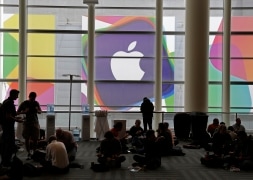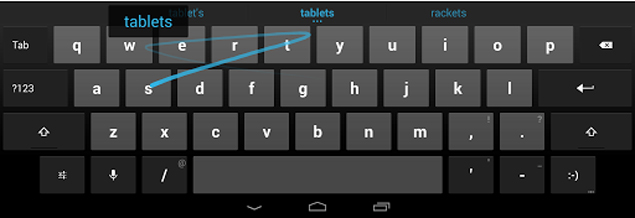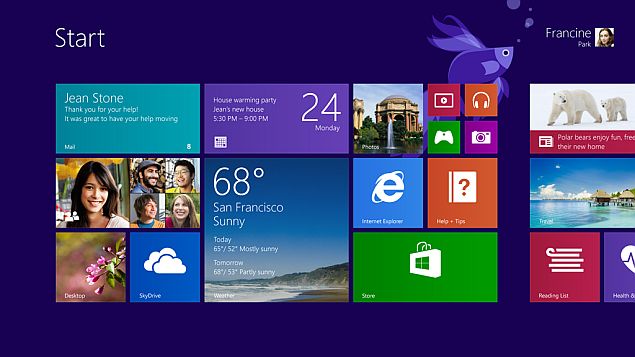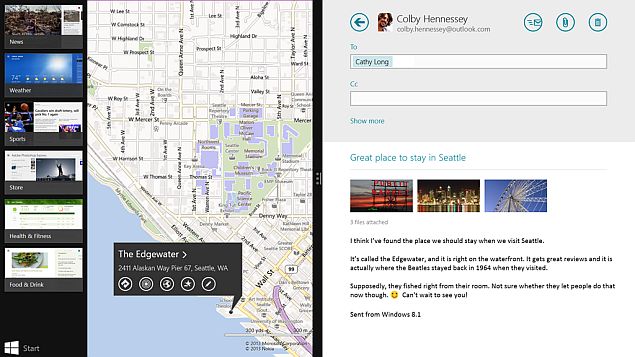
Behold the "pure" version of the Samsung Galaxy S4, available June 26, but not on Verizon.
My Verizon Galaxy Nexus is getting long in the tooth, as they say.
Old. Sluggish. I bought it soon after it launched with Verizon in
December 2011 because I
wanted
a "pure" Android experience on a network I felt had the best speed and
coverage. Now I'm ready to replace it, but there's no alternative in
sight.
Sure, Verizon has other
Android phones
I could buy. But those don't have a pure or "stock" experience, where
the Android operating system hasn't had modifications made to it by the
handset maker.
Pure Android with Verizon means going with the 18-month-old
Galaxy Nexus. Not only is it aging, but the
upgrade to Android 4.2.2 has virtually
crippled mine. I'm not alone
with
this
complaint.
Sure, we could root newer phones. But there really ought to be an
easier way to get a pure Android phone, with the latest processors and
displays, on Verizon.
That's certainly possible with Verizon's biggest competitor,
second-place AT&T. You can also do it with fourth-place T-Mobile. Just buy a
Nexus 4. That pure Android phone, out since last November, works with both carriers, though
theoretically it'll push data up to twice the speed on T-Mobile.
The big flaw with the Nexus 4 has been no highest-speed LTE support.
That's less an issue with T-Mobile, which has only a tiny LTE network.
But AT&T's LTE network is substantial.
New "pure" Android phones coming, but not to Verizon So
how about some pure Android phones that can tap into LTE? They're on the
way, from Samsung and HTC, both arriving on June 26, both supporting
LTE on AT&T and T-Mobile.

The HTC One with the "Nexus User Experience."
Samsung is offering a
Google Play edition of the Samsung Galaxy S4 for $649. HTC is offering a
"Nexus User Experience" version of its HTC One for $599, which is $50 less than Samsung.
That's
pretty pricey,
and don't expect a carrier subsidy to soften the blow. These phones
will be sold directly by Google, and they're not really aimed at the
typical consumer. They're more for developers who want a stock Android
phone to use and test with and, for whatever reason, may feel the Nexus 4
isn't phone enough.
Is "pure" really better or desirable? That's a steep
enough price to make me rethink whether a pure Android phone is really
worth the cost -- worth paying extra without the carrier underwriting
some of the phone in exchange for a contract commitment. Some of the
modifications aren't bad. Handset makers sometimes
provide better e-mail clients or photo modes than pure Android provides, I've found.
I can't speak for the HTC One, as I'm still waiting on a review unit to try. But I've been testing the
Galaxy S4
for the past three weeks, and it's been excellent. I'll do a longer
"Life with...." write-up to come, but while last year's Galaxy S3 left
me cold, the S4 has quickly become my favorite phone. Importantly,
compared to my "pure" Nexus 4 phone, it feels fast, peppy and doesn't
leave me feeling like I'm missing much just because it's not pure.
Actually,
there's one thing that I do miss, the "photo sphere" 360-shooting mode
that Android 4.2 phones support. That's been omitted on the Android
4.2-based Galaxy S4, sadly. But the S4 does have a variety of useful
custom shooting modes that its pure-Android cousins lack.
Perhaps
having a pure Android experience isn't important to me as it once was.
Certainly it never seems to have been that important to consumers in
general. The Galaxy Nexus wasn't a big hit despite its pure lineage. The
Nexus 4 has proven more popular, helped by its excellent price of $300
with no contract. But other phones, in particular from Samsung, still
seem to outsell it, aided perhaps by even lower prices when sold on
contract.
Given all this, maybe it doesn't matter whether Verizon
ever gets another pure Android device again or not. That's especially
so given that even if it did get one, history has shown that's no great
boon. Verizon
blocked things like Google Wallet on my Galaxy Nexus and
took ages
to release the latest versions of Android to my device. That's not what
I expected from a "pure" phone that I assumed had a direct line to
Google.
Nor, given all this, do I expect Verizon to get a pure
Android device in the near future. Why didn't we get a Nexus 4 for
Verizon? Sure, issues like
LTE incompatibility and wanting to have a
more "global" phone
are valid, though Google never entirely ruled out that a Verizon
version might come. But the answer seems clear. Google wasn't going to
risk a repeat of having one of its own devices crippled by Verizon's
meddling.
"Nexus Editions" to replace Nexus phones?
All of this has also gotten me thinking about the future of Nexus
devices. It's a real shift, that we went from the Galaxy Nexus in
December 2011 available for all major carriers in the U.S. to a Nexus 4
out the following year available for only two of the carriers to no new
Nexus smartphone this year, so far, for any of the carriers. Has the
Nexus brand done its duty, at least for phones?
Now, I'm sure
there will be a successor to the Nexus 4. Maybe it'll be called the
Nexus 5 if it gains a larger 5-inch screen size (similar to how the
Nexus 7 and Nexus 10 are named). Maybe it'll be called that because it's
the next number after four. Maybe it'll just stay the Nexus 4 but with
better specs. Whatever happens, however, it seems likely to be less
important than Nexus devices before it.
Part of the reason Google
started doing Nexus devices was to help work more closely with handset
makers to advance what could be done with Android on smartphones. Later,
the same was done for tablets. Android smartphones seem to be doing
pretty well now regardless of Nexus devices existing. Maybe the new
"stock" versions of the HTC One and the Galaxy S4 are better thought of
the Nexus 5 in all but name. Or maybe the future of "Nexus" isn't that
we'll have Nexus devices but "Nexus editions" of phones.
Verizon: the iPhone network?
Back to Verizon, I've also been feeling the Android mojo overall has
been slipping there. It's not just that the carrier hasn't gotten a pure
Android device in ages. It's also been behind on the two hot Android
phones of this year. It was
the last
of the major carriers in the U.S. to get the Galaxy S4. The HTC One
isn't expected to arrive until "later this summer," Verizon
tweeted this week.

The Samsung Galaxy S4 and HTC One, both late to arrive on Verizon
I'm not alone in feeling this. In doing some of the searching I
did to put together this column, I came across JR Raphael's recent
column
at Computerworld, where he itemized some of the reasons why he sees
Verizon as no longer the place for Android enthusiasts. I was struck by
how we're both seeing the same pattern, and no doubt it's not just us.
The pattern is there for many to see.
All this has gotten me
thinking that I really just need to nurse my Galaxy Nexus along a bit
longer. For work reasons, I have several phones on different networks:
an iPhone and Windows Phone with AT&T; a Nexus 4 with T-Mobile. When
the next version of the iPhone comes out, I'll probably switch to
having that on Verizon. That way, I can be assured of finally knowing my
Verizon phone will always get timely updates and not face Verizon
itself messing with the operating system. What Verizon will do to
Android, it won't do with Apple.
It's ironic. AT&T gave birth
to the iPhone in the U.S., and I'd argue that Verizon largely gave
birth to the popularity of Android in the U.S. through its "Droid"
marketing campaign, which it pushed because it lacked the iPhone. These
days, AT&T seems far more Android-friendly while Verizon almost
feels indifferent to Android.













 Bihar government has set a target to enhance the skills
of one crore people in various works in the next five years so as to
lift them above the poverty line, Chief Minister Nitish Kumar said
today.
Bihar government has set a target to enhance the skills
of one crore people in various works in the next five years so as to
lift them above the poverty line, Chief Minister Nitish Kumar said
today. Shubha Kasivisweswaran, HR Director, SunGard
Shubha Kasivisweswaran, HR Director, SunGard
 In his post, titled "Hacking into the Indian Education System", Das
wrote that he was doing this to "demonstrate how few measures our
education board takes to hide such sensitive information". The student
also told the TOI that it wasn't possible to change any values in marks
and upload fudged data again, and that he made any significant progress
in this direction only about 3-4 days after the results were announced.
His online post says he also has the data for CBSE class XII. Though he
hasn't yet made it public, he does admit it was harder to crack than
CISCE, though not altogether difficult.
In his post, titled "Hacking into the Indian Education System", Das
wrote that he was doing this to "demonstrate how few measures our
education board takes to hide such sensitive information". The student
also told the TOI that it wasn't possible to change any values in marks
and upload fudged data again, and that he made any significant progress
in this direction only about 3-4 days after the results were announced.
His online post says he also has the data for CBSE class XII. Though he
hasn't yet made it public, he does admit it was harder to crack than
CISCE, though not altogether difficult. 



 According to industry experts any HR team facilitated
by technology can efficiently manage the multi-cultural and
multi-generational workforce, across the globe.
According to industry experts any HR team facilitated
by technology can efficiently manage the multi-cultural and
multi-generational workforce, across the globe.



















 Srilagna Saha,
Srilagna Saha, 
 .
.